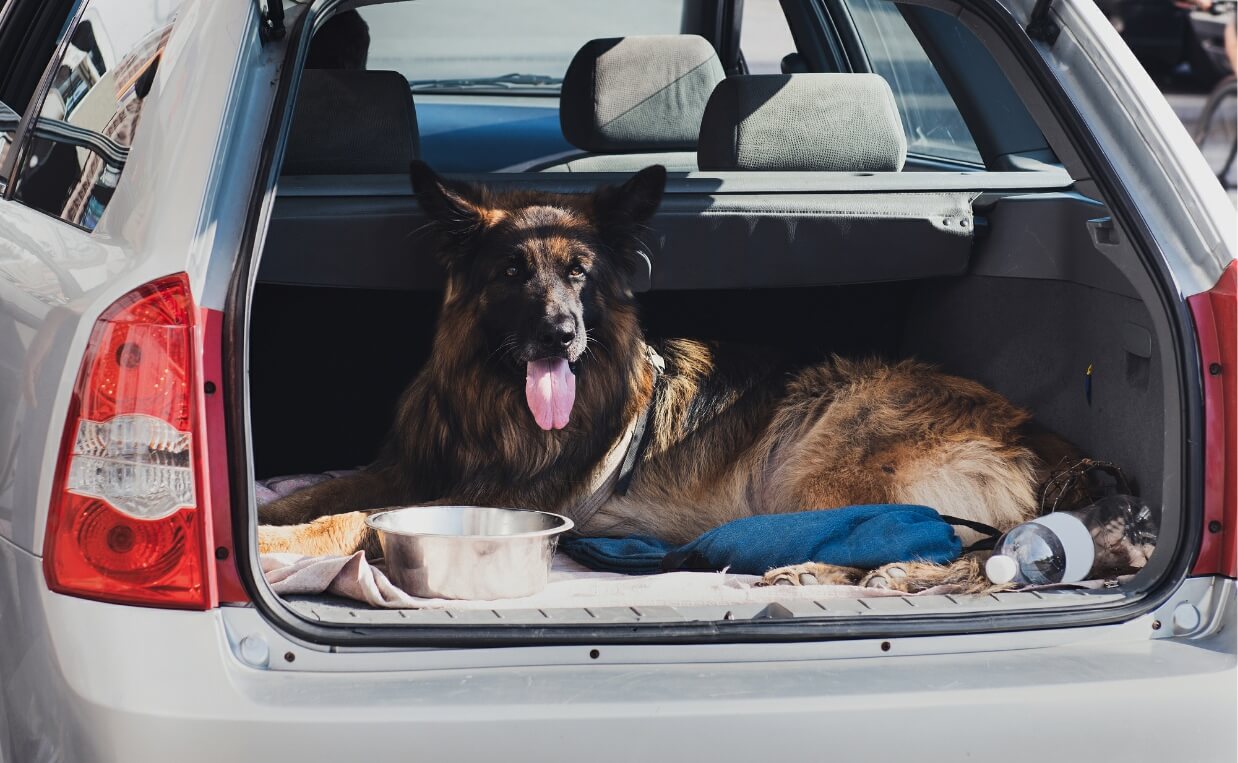
Motion sickness in dogs is a common problem. Motion (or car) sickness is more common in puppies than older dogs. The parts of the inner ear involved in balance are not fully developed in young dogs, likely causing the malady. Puppies will usually outgrow motion sickness by the time they are around one year old.
What Causes Motion Sickness in Dogs?
Adult dogs can suffer from motion sickness as well as puppies. Usually the cause in older dogs is a lack of tolerance for the motion as well as the overwhelming stimuli associated with riding in a vehicle. Some dogs become nauseous and experience vomiting and diarrhea. Dogs who only travel in a vehicle a couple of times a year are not used to car rides and often associate the ride with their stomach upset afterwards. This causes even more stress the next time they go for a ride.
Some dogs have a medical condition, such as middle or inner ear infections or vestibular disease, that predispose them to motion sickness. Sometimes medication is the cause of the sickness.

How to Tell If Your Dog is Getting Motion Sickness
There are several signs you can look for to determine if your dog is getting sick. These include:
- Excessive drooling
- Whining
- Pacing
- Smacking or licking lips
- Lethargy
- Vomiting
- Diarrhea
If you think your dog is getting sick, it’s a good idea to stop the car and let him or her walk around outside. This may help temporarily relieve their stress.
How to Prevent Motion Sickness in Your Dog
Helping your dog overcome motion sickness may take some time, effort and patience, but it will be worth it. Being able to accompany you on more trips will give you and your dog more time together.
Your first goal is to help desensitize your dog to car travel. The best way to accomplish this is to take small trips frequently before going on a long road trip. Start by placing your dog in your car, starting it up and sitting there without moving for a few minutes. The next day, repeat this process, but stay in the car a longer period. The next day, back out of your driveway and return. Gradually work your way up to driving around for 20 to 30 minutes. Be sure to praise your dog and give him or her a treat as a reward. This will help your dog associate car rides with a treat.
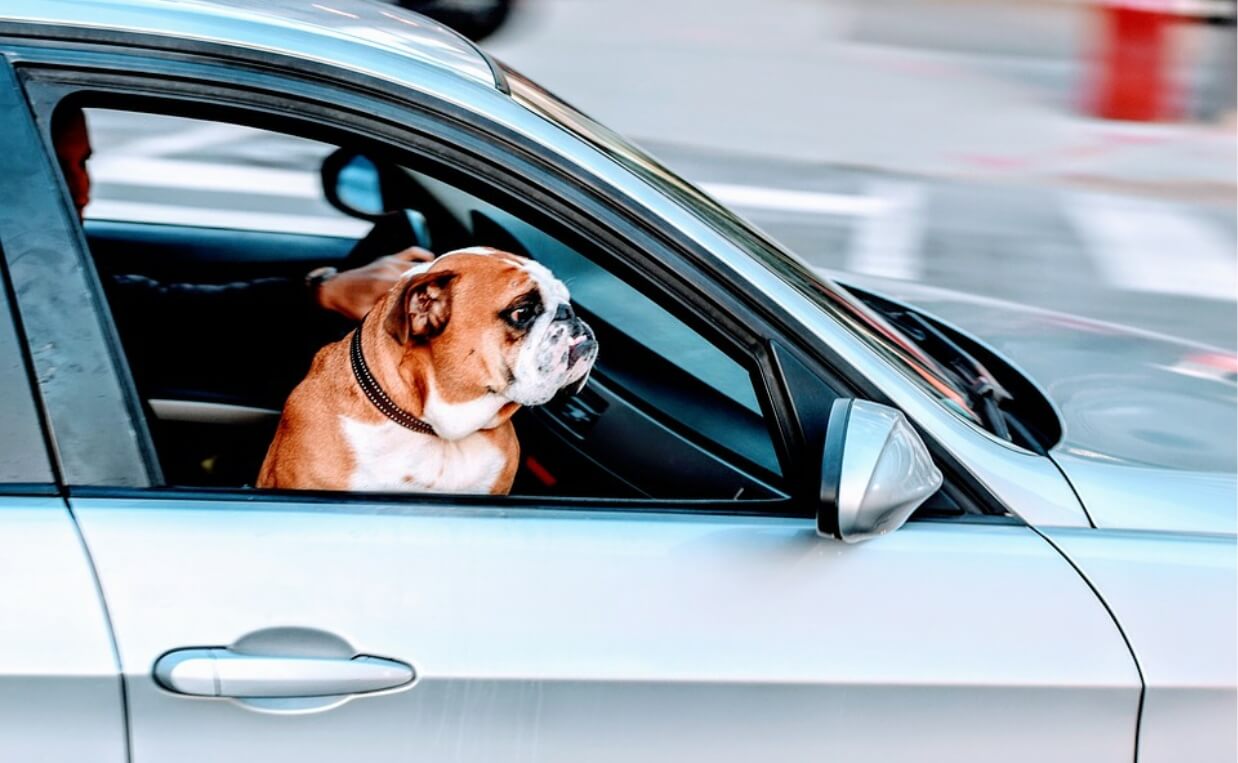
It can take a few weeks for your dog to feel more comfortable while riding in the car. Be sure to gradually expose your dog to more and more stimuli. You cannot force your dog to get over or deal with his or her anxiety. Traveling in a confined space can be scary for a dog and may take some time for your dog to adjust.
Make sure you maintain a calm demeanor and do not scold your dog, even if he or she gets anxious and starts to howl or whine. If you notice your dog becoming stressed, stop the ride and start another day. It is a good idea to condition your dog to ride in a carrier, which can also be good practice for riding in an airplane or train. A dog seatbelt is also a good idea. Both a carrier or a seat belt will help keep your pooch safe if you have to slam on the brakes or God forbid you get in an accident.
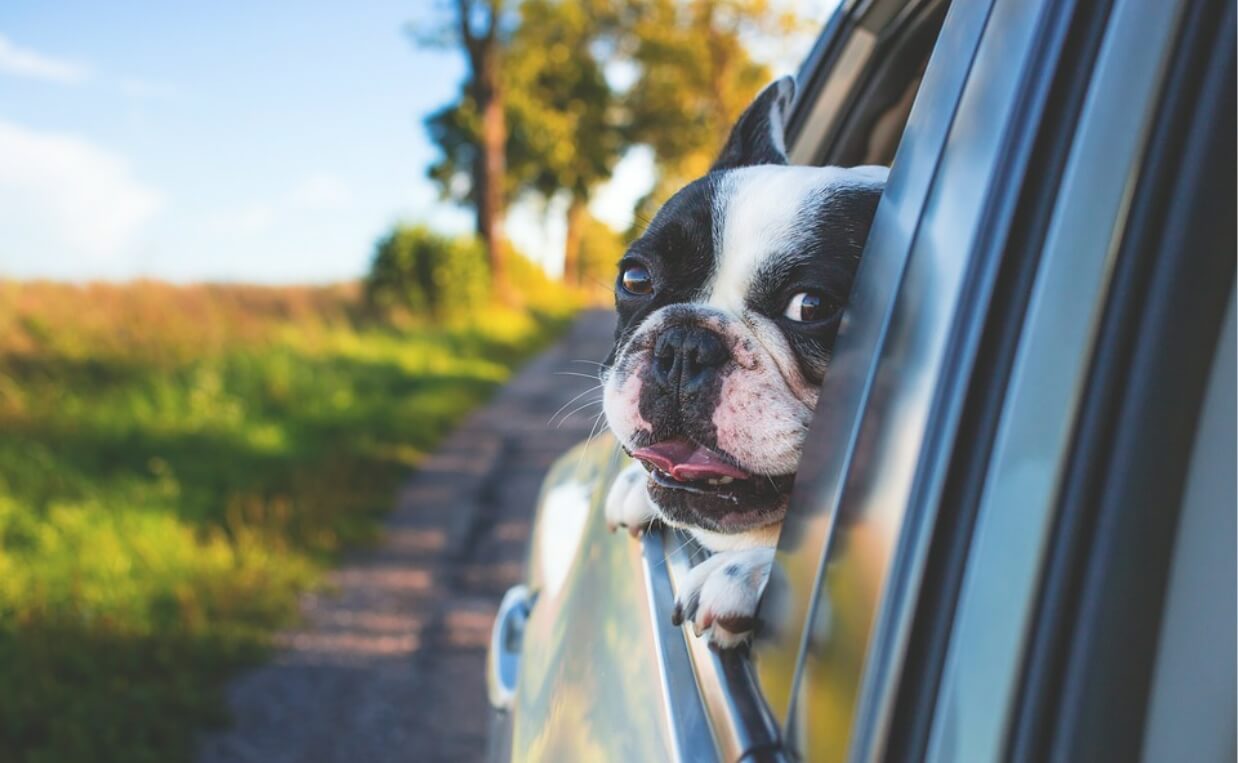
Here are additional tips to help make your dog’s ride more enjoyable.
-
Don’t feed your dog for 12 hours before the car ride
An empty stomach will help your dog experience less nausea and the need for potty breaks. Be sure to provide access to fresh water whenever possible. Water bottles that hang on the car door are a good option.
-
Use a carrier or dog safety harness
Anxious dogs can get hurt or cause an accident. Many dogs see a carrier as a “safe place”.
-
Keep the car cool and quiet
Play soft classical music and keep the temperature cool.
-
Give your dog something that smells familiar
Put a t-shirt or blanket with your scent in your dog’s carrier. This will help your dog relax and feel safe.
-
Offer special toys
Give your dog a special toy reserved just for car rides, especially if your dog is young. This may help your dog associate riding in the car with fun.
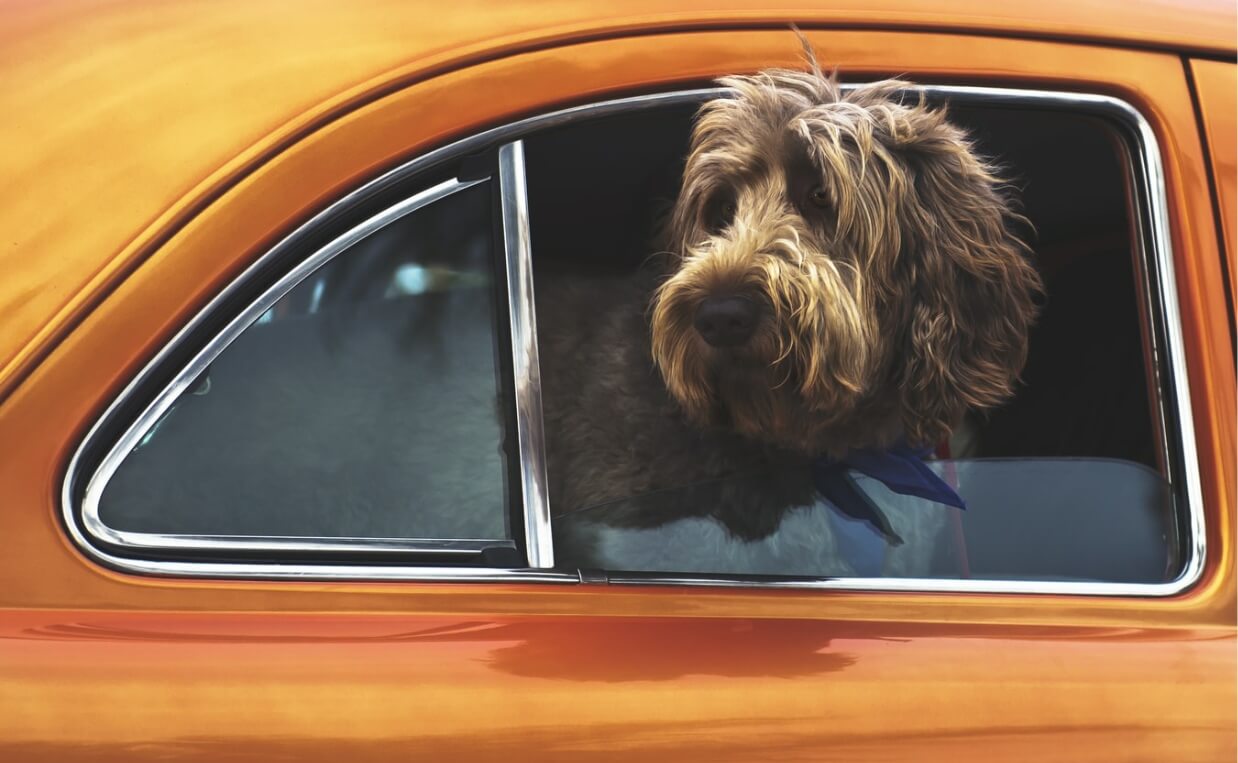
Natural Dog Motion Sickness Remedies
There are many natural remedies that may help your dog.
-
Ginger
Ginger helps treat nausea and vomiting in dogs. Consult your veterinarian before trying it, though. Ginger should not be given to dogs with known bleeding disorders, taking anticoagulants or nonsteroidal anti-inflammatory drugs (NSAIDS).
-
Adaptil
Adaptil is a calming product for dogs. It can be purchased as a spray or for the collar. The collar can be used daily; the spray is used 15-20 minutes before travel or other stressful event.
-
Calming Supplements
There are several supplements designed to calm dogs when given orally, including:
These are natural remedies so are safe options for most dogs. Some may need to be given daily for several days or even weeks to receive the maximum benefit.
-
Lavender
Lavender is a safe aromatherapy option you can use in spray form. Or saturate a cotton ball with lavender essential oil and place it in your vehicle a few minutes before leaving the house.
Just be sure to either throw the cotton ball away after your trip and to put it in an area where your dog cannot get to it and ingest it.
-
CBD Supplements
One other product you might consider for dog motion sickness is CBD (cannabidiol). CBD has become more widely available and comes in many forms, including chews, treats and oil. There are various regulations concerning CBD and quality is not always guaranteed. For these reasons it is best to consult with your veterinarian before giving your dog CBD products.
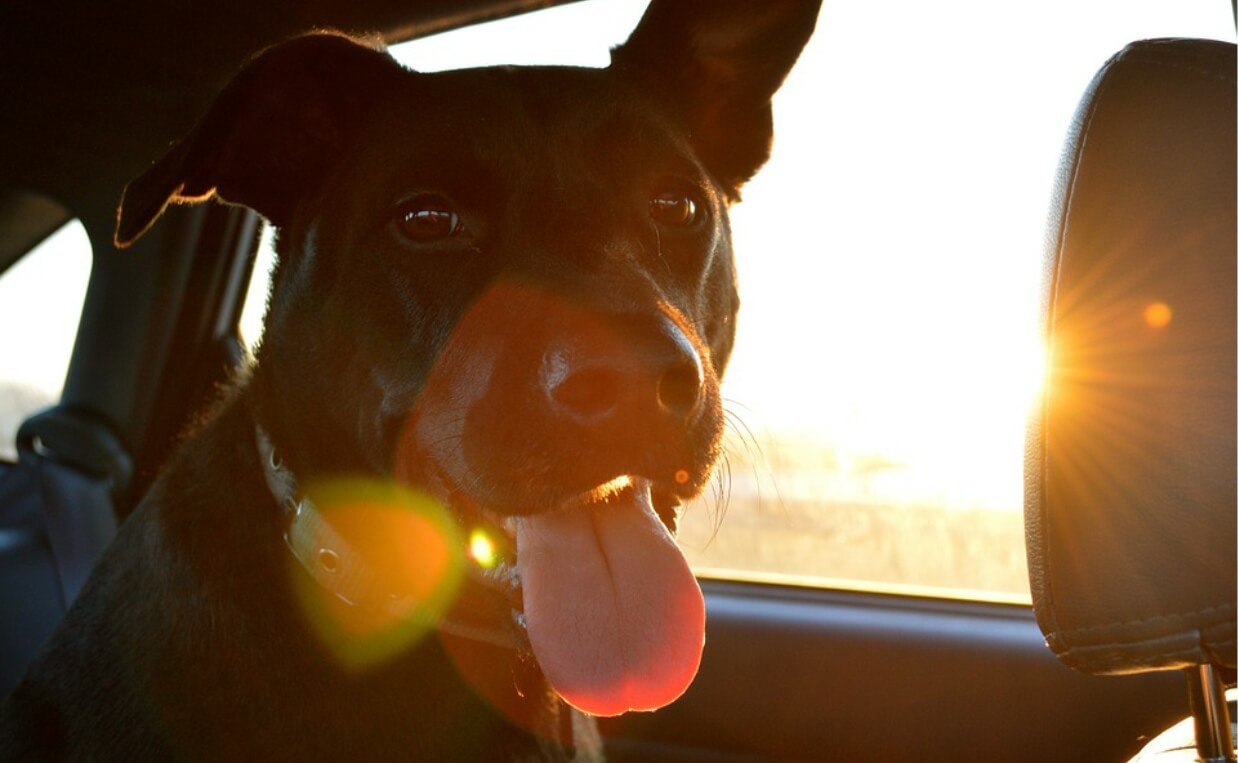
Medications for Canine Motion Sickness
There are a few pharmaceutical options for preventing motions sickness in dogs.
-
Cerenia
Cerenia is the only FDA-approved prescription medication for motion sickness in dogs. It specifically helps with vomiting. Dogs should be at least 8 weeks old before taking Cerenia. Research shows it is very effective.
-
Meclizine
Meclinzine is an antihistamine with sedative and anti-vomiting effects. It is available over the counter and as a prescription. The most common side effect is drowsiness.
-
Benadryl and Dramamine
Benadryl and Dramamine can be purchased over the counter for motion sickness in dogs. Both products are antihistamines and may have sedative effects.
If using Benadryl, be careful you don’t buy a product with other ingredients in it. Benadryl is often combined with products designed to help with colds. For dogs, make sure there is only one active ingredient called diphenhydramine.
-
Anti-Anxiety Medication
Some dogs become so anxious in the car they need anti-anxiety medication. This is usually combined with behavior modification techniques.

If you suspect your dog needs anti-anxiety medication, please reach out to your veterinarian, who can provide guidance on what types of medications or remedies will work best for your dog.
Now that it is becoming easier for families to travel, keeping every safe and comfortable is more important than ever. While it may take some time and patience to help your dog overcome motion sickness, road trips can be an ideal way to keep the family connected and give your dog the opportunity to explore new places.
Have you had a dog who suffered from motion sickness? How did you help them feel better? Please share your experience in the comments below.

 Urinary Incontinence in Dogs
Urinary Incontinence in Dogs What to Put in a Dog First Aid Kit
What to Put in a Dog First Aid Kit 5 Easy Steps to Brush Your Dog’s Teeth
5 Easy Steps to Brush Your Dog’s Teeth Is RoundUp Weed Killer Safe for Dogs?
Is RoundUp Weed Killer Safe for Dogs? Help Your Dog Fight Seasonal Allergies
Help Your Dog Fight Seasonal Allergies






Leave a Reply